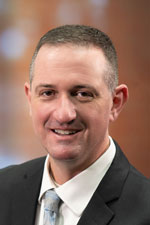ARCHIVED: NOT AVAILABLE FOR CREDIT
Laboratory Evolution and Adaptation to Telemedicine: Are We Blockbuster in a Netflix World?
This webinar will review the results from existing telemedicine adoption surveys, the impact to laboratory volumes and review the results of the recently executed ARUP Telemedicine survey. Additionally a case study will be presented to provide a comparison from another industry exploring the impact of diffusion of innovation on market share.
Originally published on September 16, 2020
Lecture Presenter
 | Andrew Fletcher, MD, MBA, CPE, CHCQM, FCAP Medical Director |
Dr. Andrew Fletcher is a medical director at ARUP Laboratories and a clinical adjunct professor at the University of Utah School of Medicine. He has significant experience in leading quality initiatives that enhance organizations’ safety and value. As ARUP’s medical director of Consultative Services, he leads a team of expert consultants focused on laboratory stewardship, laboratory efficiency, and outreach growth. Throughout the U.S., he has helped develop laboratory stewardship programs that have captured millions of dollars in cost savings. Dr. Fletcher received a master’s degree in business administration from the University of Massachusetts and graduated from the Mercer University School of Medicine with a medical degree. He completed a surgical internship at Gesinger Medical Center before completing an anatomic and clinical pathology residency at the University of Florida. Dr. Fletcher is certified by the American Board of Pathology in anatomic and clinical pathology and cytopathology. He is a fellow at the College of American Pathology and a certified physician executive by the Certifying Commission of Medical Management. His research interests include laboratory stewardship, healthcare and laboratory management, and blood utilization.
Objectives
After this presentation, participants will be able to:
- Describe the results of the ARUP telemedicine survey
- Discuss the impact of innovation on market share
Sponsored by:
University of Utah School of Medicine, Department of Pathology, and ARUP Laboratories
 Site Search
Site Search

